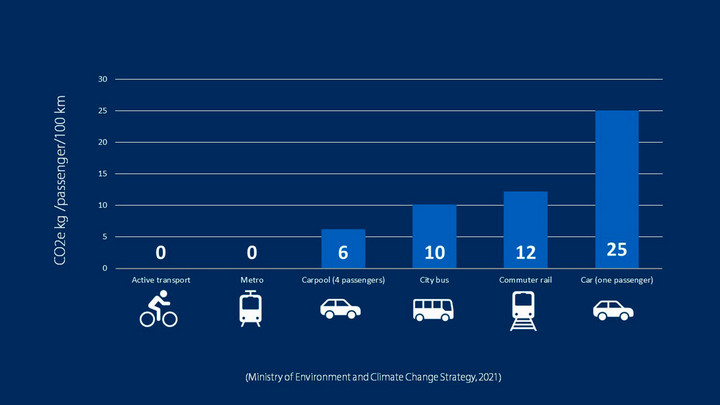Travel guide
Addressing climate change and supporting thriving ecosystems is critical for the well-being of everyone on the planet. Travel is essential for many business school faculty members. It enables collaboration with global partners, research experience, and training of future leaders to address complex environmental and social challenges.
Regenerative travel seeks to restore and improve ecosystems, communities and social systems while meeting educational goals. This guide provides a framework for balancing the benefits of global engagement with the responsibility to regenerate environments and communities visited.
Before all travel
Assess the necessity of in-person participation
Consider whether online attendance or digital resources can provide equivalent value. Use the travel justification table as a quick guide to help decide whether travel is truly necessary.
| Point of career | Most justifiable | More justifiable | Less justifiable | Least justifiable |
|---|---|---|---|---|
| Early career | Presenting & promoting research | Collecting data | Developing relationships | Not directly related to own research |
| Mid career | Opportunities for your own research | Collecting data | Presenting & promoting research | Not directly related to own research |
| Late career | Opportunities for the school | Funding opportunities | Progressing major projects | Collecting data |
| Everyone | Fieldwork & contractual obligations | Sensitive negotiations | Travelling with short durations | Routine meetings |
Note: Short trips may be less justifiable if they do not directly support research, learning or community impact.
Leverage remote technologies
Many events can be attended virtually without reducing quality or impact.
Optimize participation
Determine how many school members need to attend. Often, one or two participants are sufficient while others engage virtually and share insights later.
Bundle activities
- Are multiple events or meetings available at the destination?
- Can they be combined into a single trip?
- Are there other opportunities for learning or collaboration locally?
Engage local networks
Whenever possible, prioritize shorter trips to collaborate with regional partners. Establish regional hubs for larger or international conferences to reduce travel and share knowledge.
Regenerative land and local transportation
Prioritize public transit and rail
Buses, trams and trains reduce road congestion, strengthen local infrastructure, and lower collective emissions. Savings can be reinvested in green infrastructure and community projects.
Walk or cycle to connect with local ecosystems
Active travel has zero emissions and fosters deeper connection to living systems and local communities.
Carpool or use shared rides
Maximizing vehicle occupancy reduces emissions per person, supports cooperative resource use and lowers traffic-related environmental impacts.
Support regenerative mobility programs
Bike-share, electric scooter and e-bike programs that invest in maintaining green infrastructure or funding urban greening projects provide direct benefits.
Use low-impact vehicles when necessary
Hybrid, electric or biofuel-powered vehicles are preferred for required driving. Local rental fleets that contribute to carbon-positive or community-based projects are ideal.
Combine trips intentionally
Bundling multiple meetings, site visits or activities into a single trip maximizes positive impact and reduces disruption to ecosystems and communities.

| Transportation method | Carbon footprint (kg CO2e/psg*100 km) |
|---|---|
| Rail | 12.2 |
| Bus | 5.2 |
| Carpool (4 people) | 5.5 to 7.0 |
| Short haul flight | 15.8 |
| Medium haul flight | 9.0 |
| Long haul flight | 10.0 |
| Private vehicle | 22.0 to 29.0 |
Ministry of Environment and Climate Change Strategy. (2021, April). 2020 Best practices methodology for quantifying GHG emissions.
Flying more responsibly
Certain destinations require air travel, but some choices are better for ecosystems and communities.
Select airlines that invest in ecosystem restoration or carbon-positive projects
Some airlines support reforestation, wetland restoration or renewable energy initiatives. Funding contributes directly to environmental improvements.
Support local regenerative projects at destinations
Donations or volunteer work with local conservation, agroforestry or community-led sustainability initiatives enhances living systems.
Prioritize regenerative accommodations near airports
Hotels implementing regenerative practices, such as restoring landscapes, supporting local farmers, or using regenerative agriculture products, create positive impact.
Reduce footprint through thoughtful flight choices
Low-emission routes, economy seating and use of public transit or shared shuttles to reach airports allow reductions to be applied to other regenerative actions.
Offset with intention
Offset programs should create positive ecosystem outcomes, such as wetland restoration or biodiversity projects.
Regenerative accommodation
Accommodations can actively support ecosystems, communities and regenerative practices.
Choose accommodations that give back
Hotels, lodges or guesthouses investing in ecosystem restoration, regenerative agriculture, or community development provide measurable environmental and social impact.
Stay within walking, cycling, or transit distance
Proximity reduces emissions and encourages local engagement, supporting small businesses and connecting with communities.
Engage with regenerative initiatives on-site
Participation in tree planting, wetland restoration or conservation programs enhances local ecosystems.
Conserve resources intentionally
Turning off lights, air conditioning and electronics, and choosing accommodations using renewable energy or closed-loop systems, supports long-term regenerative practices.
Bring reusable items and reduce single-use waste
Reusable toiletries, water bottles and bags minimize waste, and reduce pressure on local resource systems.
Conclusion
Travel less, travel regeneratively.
Every choice from flights to hotels can actively restore ecosystems, support communities and reduce overall footprint.
Consider how each trip can enhance living systems rather than only minimize harm.
Connect with us
Have any questions or need assistance? Reach out to our office by email or phone us at 250-853-3721.

